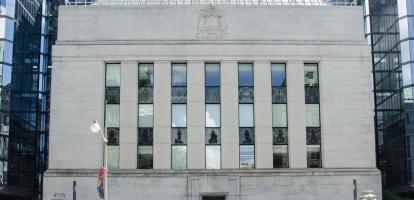It’s easy to see what Volkswagen VWAGY and Stellantis STLA-N get out of the billions in subsidies that Canada is dangling in front of them for domestic battery plants. Such subsidies clearly improve the companies’ returns on investments enough to attract these electric-vehicle battery plants away from other jurisdictions such as the United States or Europe. It’s harder to see what the Canadian and Ontario governments get in return.
They won’t get a stake in the firms’ profits. These are subsidies, not investments. Federal and provincial governments won’t own a portion of the plants and they will not share in the financial returns. Governments may capture some corporate income tax revenues, but as production subsidies get more generous it’s hard to see how the resulting tax revenues will offset the subsidies.
Reviewing government statements on both deals, the two elements that come up most often are references to jobs and economic effects. The federal government has claimed that the Volkswagen plant to be built in St. Thomas, Ont., will create 3,000 direct jobs and 30,000 indirect jobs. While I’ve not seen a number for the indirect jobs that will supposedly be created by the Stellantis plant slated for Windsor, Ont., I suspect the government is of the opinion that it will also carry a significant job creation “impact.” Before discussing whether we should trust this number (we shouldn’t), it’s worth discussing whether we want a government that uses subsidies to create jobs.
As of November, 2022, Canada’s unemployment-to-job-vacancy ratio is at historic lows. There are fewer Canadians looking for jobs (relative to the jobs available) than at any point in recent history: a condition conventionally referred to as a labour shortage. Nearly half of the companies active in both the construction and manufacturing sectors report difficulties in attracting skilled labour as an obstacle to continued operations.
This labour shortage is a major contributing factor to recent inflationary pressures, which in turn have prompted the Bank of Canada to raise interest rates faster than at any point since 1995.
Subsidizing job creation at this stage of the business cycle doesn’t mean that more Canadians will have jobs – it means shuffling the deck; some businesses will lose workers so that those workers can move to newly created jobs in government-subsidized plants.
Had these agreements been made at the bottom of a recession, they would be responsible and welcome. Right now, this is irresponsible and inflationary spending.
This also means we shouldn’t trust the extraordinary claims about indirect job creation. The federal government has not released any formal economic modelling or any of the calculations used to support their claim of 30,000 indirect jobs related to the Volkswagen plant. This makes these numbers hard to criticize beyond simply asking: How did the government arrive at these figures?
The Volkswagen deal and mostly likely also the Stellantis deal have been prompted in part by the United States’ passing of the Inflation Reduction Act, which includes blanket agreements for generous production subsidies for clean energy projects (such as electric-vehicle batteries). The new reality is that if we want to compete with the U.S. to attract manufacturing plants like this, we now have to offer competitive subsidies.
But Canada cannot win a subsidy war against the U.S. They have a substantially larger economy with a larger tax base and because of its size, the U.S. economy is also more diverse than Canada’s. As an aside, this is precisely why the negotiation of NAFTA (and its successor, the USMCA agreement) is so critical to Canada: both countries benefit from open trade – protectionism and mercantilism (including a subsidy war) will only hurt us.
That’s not to say we should abandon any and all attempts to attract investment. But it does mean we need to be strategic. Governments need to have clear guidelines for the use of public funds on industrial subsidies. Industrial policy is a very powerful tool, but it needs to be used very carefully and in limited capacity to ensure that taxpayer funds are going toward worthwhile strategic uses and are not simply padding a return on investment or leading to costly reallocation of labour from already productive uses.
Kent Fellows is an assistant professor of economics at the University of Calgary’s School of Public Policy.





